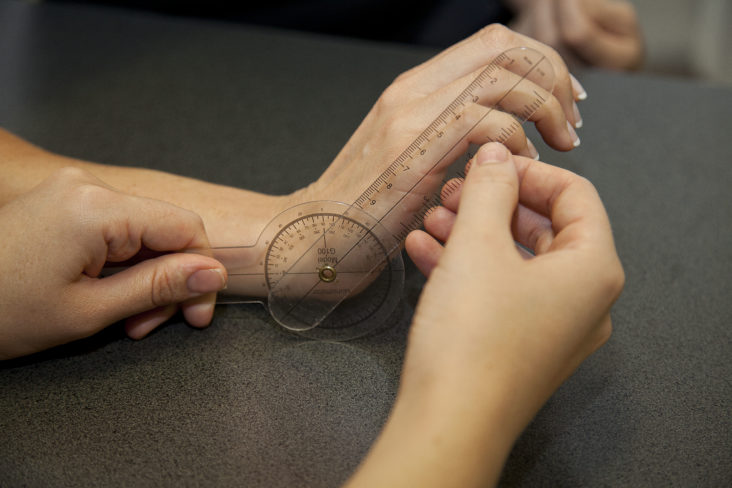Find out why a finger dislocation shouldn’t be treated lightly
Blog Post by Erika Lassig (BOcThy; MHSc(OT); Member AHTA)
If you follow the AFL, you’ll know that Brisbane Lions vice captain Tom Rockliff experienced a finger dislocation last month during their match against Richmond. But it’s no biggie because he won’t miss any matches, right? But hang on a second, the Lions team Head of Medical reported that the dislocation was accompanied by a small fracture near the joint and Rockliff has to wear a splint on the finger when he’s not playing. That sounds a bit more serious… but isn’t it just a dislocated finger?
Finger dislocations are extremely common in ball sports, in fact you may have had one or two yourself. All it takes is a fast-moving ball to hit the end of the finger and – ouch! It’s dislocated. Sometimes, it’s as simple as popping the finger back in, buddy strapping to the next finger and away you go. But often, it’s not so simple. It hurts. Ouch. The finger swells up. Gross. It becomes stiff. Uh-oh. You’re left with a permanently bent, clunky or stiff finger. What the?!. The more often you dislocate the same joint, the more easily it happens until it takes barely anything to pop it out of place. And then what? The only solution is surgical. Well that’s a real pain in the neck.
I’m here to give you some tips on why and how to prevent complications such as stiffness, deformity and recurrent dislocations. Because it may not be “just” a dislocated finger.
What to do – when it happens
When you or your team-mate dislocate a finger in a match, make sure it is only put back in by a qualified person. Jo Bloggs could cause more damage by reefing on your injured finger. If there isn’t someone qualified onsite, go to your local emergency department. An x-ray prior to popping the finger back in (known as reducing the dislocation) can actually be useful information for your treating therapist.
What to do – after reduction
It’s very important to get an x-ray after the dislocation has been reduced. This will tell you whether the joint is in the correct position, whether the joint is stable, and whether there had been any accompanying bony injury. Please do not skip this step! X-rays are bulk-billed so this will only cost you your time and may save you time, money, pain and a raft of problems down the track.
The finger should be splinted or buddy strapped to the neighbouring finger immediately after reduction. This is to prevent it popping out again as you may have torn some of the supportive tendons or ligaments.
What to do – week one
Armed with your x-ray in hand, visit your local hand therapy clinic as soon after your injury as you can, preferably within the first week. Be cautious of seeing other allied health or complementary medicine professionals. They do not have the in depth knowledge and experience for dealing with finger injuries. First and foremost, Hand therapy will arm you with information. It s so important for us to provide education about what has been injured, what to avoid to prevent further injury and what can be done to aid in a speedy recovery. A practitioner of hand therapy will be able to custom make a suitable splint to protect the finger from further dislocation, without immobilising any joints that do not need to be. A compression wrap to the finger will help to control the swelling, as persistent swelling is a major contributing factor pain and stiffness of the finger. Exercises. Yes, even though the finger will be painful, exercises are important in the first week. But not just any exercises, very specific exercises which are safe to do post dislocation, usually whilst wearing your custom-made splint.
What to do – week two and three
If you haven’t already, visit your local hand therapy clinic. Secondly, keep wearing your splint and complying with the prescribed treatment. This is an important time for the injured structures in your finger to keep healing. It’s normal for the finger to still be somewhat swollen and painful. This is important as swelling is part of the healing process and pain is an important reminder to be kind to your finger because it’s still healing.
What to do – Week 4
It’s likely that you will be able to stop wearing the splint most of the time but you still need to be careful with what you do as the finger is still healing. If you wish to play sport, you will need to strap the finger to the neighbouring finger to protect it from re-injury.
What to do – week 6 and beyond.
All being well your finger should be pretty much back to normal by this time. Some swelling and the odd twinge of pain may linger. Buddy strapping during sport is generally recommended until 12 weeks, but if you had some decent hand therapy and followed the expert advice, your injury will most likely be a distant memory from the time you had “just” a dislocated finger.

